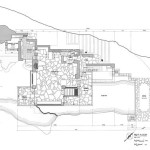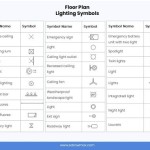House Landscaping Plans: Transforming Your Outdoor Space
Landscaping is more than just planting a few trees or shrubs. It's an art form that involves careful planning, design, and execution to create a beautiful and functional outdoor space. Whether you're looking to enhance your home's curb appeal, create a peaceful retreat, or add valuable features, a well-conceived landscaping plan is essential. This article provides a comprehensive guide to creating effective house landscaping plans.
1. Defining Your Goals and Budget
Before you start sketching designs, take time to consider your goals for the project. Do you desire a low-maintenance landscape, a vibrant flower garden, or a functional outdoor living area? Understanding your priorities will guide your decisions and help you stay on track. You must also assess your budget realistically. Landscaping projects can range from simple and affordable to complex and expensive. Establishing a budget helps you make informed choices about materials, plants, and the overall scope of the project.
2. Analyzing Your Property and Site Conditions
A thorough analysis of your property is crucial for effective landscaping. Consider the following factors:
- Sunlight: Determine the amount of sunlight your yard receives throughout the day. This will help you select plants that thrive in your specific conditions.
- Soil Type: Analyze your soil's composition. Is it sandy, loamy, or clay-based? Determining the soil type will inform your plant selection and soil amendments.
- Slope and Drainage: Evaluate the topography of your yard. Incorporate slope and drainage considerations to prevent erosion and ensure proper water management.
- Existing Landscape: Assess the existing features, such as trees, shrubs, and hardscaping elements. Identify any potential obstacles and consider their impact on your plan.
3. Creating a Layout and Design
With your goals, budget, and property analysis in hand, you can begin to create a layout and design for your landscaping. Consider the following elements:
- Hardscaping: This includes elements such as patios, walkways, retaining walls, and fences. Hardscaping elements provide structure and functionality to your landscape.
- Plant Selection: Choose plants that are suitable for your climate, soil conditions, and desired aesthetic. Consider factors like growth habits, flowering periods, and foliage color.
- Water Features: Ponds, fountains, or even a simple water feature can add a touch of tranquility and visual interest to your landscape.
- Lighting: Incorporate lighting to enhance your landscape's beauty and safety. Consider using ambient lighting, accent lighting, and pathway lighting.
4. Incorporating Sustainable Practices
Sustainability is increasingly important in landscape design. Consider these practices to minimize your environmental impact:
- Water Conservation: Use drought-tolerant plants and install water-efficient irrigation systems.
- Native Plants: Plant species native to your region, as they are well-suited to the climate and require less maintenance.
- Composting: Create a compost bin or use compost to enrich your soil and reduce waste.
- Reduce Chemical Use: Opt for organic pest control and fertilizer options to minimize chemical runoff.
5. Finding Professional Help
While you can certainly create your own landscaping plan, seeking professional help can often be beneficial. Landscape designers and architects can provide expert guidance, ensuring your plan is aesthetically pleasing, functional, and sustainable. They can help you navigate the complexities of plant selection, hardscaping, irrigation, and other technical aspects of landscaping.
6. Implementing Your Plan
Once your plan is finalized, it's time for implementation. You can choose to handle the landscaping work yourself, or you can hire professionals. If you're doing it yourself, be sure to follow safety guidelines and work at a pace that suits your skills and abilities. Regular maintenance is essential for keeping your landscape healthy and looking its best. This includes watering, weeding, pruning, and fertilizing.
House landscaping plans are a valuable investment that can enhance your home's beauty, functionality, and value. By following these steps and considering the key aspects discussed, you can create an outdoor space that meets your needs and reflects your personal style.

Awesome Landscaping Ideas For Your Outdoor Space

How Can You Develop A Comprehensive Landscape Design Plan Elite Landscaping

Front Yard Landscaping Ideas Of 2024 Forbes Home

Landscape Plan

Small Front Yard Landscaping Ideas Salisbury Sherwood Park Ab

18 Landscaping Rules For Building Your Perfect Yard

Front Yard Landscaping Ideas Garden Design

Landscaping For Front Yards Designs Any Home Lowe S

40 Best Landscaping Ideas Around Your House With Rocks Rock Flower Beds Lava Landscape

Front Of House Landscaping Network
Related Posts








